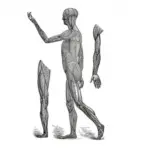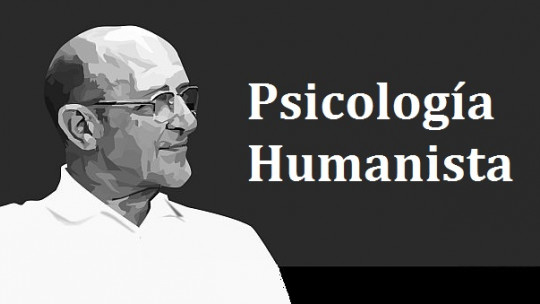
Psychology is a science that, in the mid-19th century, embraced positivism as the only reference for the development of your body of knowledge. That is, he adopted as his own the model of natural and exact disciplines, as well as their high claim to rigor.
However, as time went by, there were many authors who considered that the object of study of Psychology had a particularity that differentiated it from such subjects: whoever observes is, at the same time, what is observed (fusion of subject and object). . The study of the human being is carried out, thus, by another human being; Therefore, it is very difficult to remove it from its basic experiential dimension and understand it as an alien, immutable, predictable, categorizable and objective object.
This consideration gave rise to constructivist and phenomenological thinking, which emphasized the relevance of Psychiatry and Psychology as instruments to access the being “in itself.” In this context it would be born Binswanger’s existential analysis.
Binswanger’s existential analysis
Binswanger’s existential analysis arises from 19th and 20th century Psychiatry, in a historical parenthesis during which multiple theoretical models coexisted both for this branch of knowledge and for Psychology itself (from the introspection of Wilhelm Wundt to the behavioral models or the incipient rebirth of cognition and emotion as dimensions of human experience susceptible to analysis), and part of a phenomenological vision of knowledge.
Phenomenology makes a direct allusion to experience, as it is experienced by the subject who observes it and who is part of it. It is based on constructive consciousness, which transforms the objects in which it is deposited to give them a unique content for each individual, which supposes the confluence of being and existing in a whole that is postulated as the highest source of knowledge about the human fact (holism).
In the following pages we expose some of the most important elements that emerge from the very extensive work of Ludwig Binswanger, focusing on his theoretical influences and his proposals, often reactive to the biological and empirical rigor that dominated the science of his time.
1. Openness to philosophy
Binswanger He was a close friend of Sigmund Freud and wrote his doctoral thesis with Carl Jung. In this sense, he was a Psychiatrist whose academic training followed a traditional line, based on the elementary precepts of psychoanalysis. He therefore had extensive knowledge of this theoretical framework, and was also a pioneer in transferring such teachings to Switzerland in the first half of the 20th century.
However, he ended up feeling disappointed by the excessively biological and pansexual orientation of Psychoanalysis itself, and would seek refuge in the Philosophy of his time. In this way he would learn about the phenomenological paradigm of the human being, which he would adopt as his own, founding an existentialist current that tried to reconcile Psychiatry with a deeper vision of living (to the detriment of biomedical and psychopathological categories).
2. The historicity of the human being
The understanding of humanity, from the existentialist vision, would be indivisibly linked to its historical and cultural reality. Each person would be made up of a broad accumulation of lived experiences, which would provide them with a characteristic perception of the world and life, without which the pathology they may be suffering at any given moment could not be understood. This phenomenon would transcend the concept of “learning” diving into a temporal and narrative dimension of being.
Thus, the illness would be integrated within the own experience of the subject who experiences it, and would arise as a manifestation congruent with his or her intimate experiential discourse. Pathology could not be understood as a crack in the construction of reality that the human being forges for himself, but rather it would be linked to the naturalness of other facts and could not be captured without active listening to the path followed.
3. Experience as the key to knowledge
In Binswanger’s time, Psychiatry relied on the clinical method to outline its theoretical postulates and practices. In this way, the diagnostic judgment was limited to a categorical assessment of the sick subject, whose suffering would be framed in the general (and not very descriptive) categories of neurosis or psychosis (reducing the individuality that would be inexorably linked to their way of being in the world).
In order to confront this orientation, and inspired by an emerging phenomenology, Binswanger decided to advocate for the holistic perspective. As a result, he conceived a very sensitive approach to integration and oneness, which definitively departed from the generality and allowed a faithful approach to the pathology of those who lived with mental illnesses.
4. Existing is not only “being”, but “being in the world with others”
For Binswanger, the concept “dasein” (which comes from Germanic and is literally translated as “being there” or “being in the world”) had to be complemented to achieve true existential meaning. While it is true that every person would be an active agent of the place and time in which they live, and would feel an unavoidable interest in expressing their individuality, this could not be understood without the infinite ways in which they relate to others.
For Binswanger, every human being would be an isolated reality that could only transcend to the extent that it was discovered in front of the other, which gave deep meaning to the therapeutic context that was established between therapist and patient. From the connection between two worlds the purest expression of being would emerge, as a shared reality that would enjoy more meaning when told in the space in which it is displayed (and with respect to it).
Thus, being part of the world in which he lives, the person could not be understood apart from it. There would be a fusion between the object and the subject, between what is observed and the one who observes, breaking down its duality under the heading of the term “existence”. Thus, the mundane and the feasible (through which the person shapes their own individuality) would be the foundation of what one is, beyond the abstractions with which psychoanalysis of that time based its theoretical postulates.
5. The human being as a project
According to Binswanger, each person has being as their fundamental life project. That is, every individual would aspire to this ultimate goal and would satisfy it by existing. For the author, what is relevant about the therapeutic encounter would be the natural emergence, in the dyadic relationship, of the individual’s experiences; because in them would be found everything that could be apprehended in a certain way, ignoring prejudices or doctrines that were guiding understanding.
In this same context, the author defended the term “epojé”, of deep philosophical tradition and which was recovered by his contemporary Edmund Husserl (since its origin sinks into the thought of ancient Greece). The “epojé” is a skeptical practice that defends the suspension of judgment and even the concept of reality held by the observer, so that the fact that is observed can be expressed as it is (without conditions of any kind).
6. The therapeutic relationship as a horizon of encounter
The horizon of encounter refers to the context that arises from the confluence between the universes of the listener and the listener, which requires a phenomenological perspective. This is intended to ensure that the approach to the patient always respects their history and the reconstruction of the facts that could emerge from it in each case, showing as many ways of existing as there are individuals who inhabit the world.
This would confront the generalist vision of psychiatry; which sought to reduce, as parsimoniously as possible, the complexity of individuals to operational terms in which to establish regular, identifiable and predictable patterns. From such a perspective it would be drawn a more horizontal relationship between the patient and the therapist the latter aspiring to a total understanding of the experiences that make up everything that is in its entirety.
For Binswanger, the relationship between people would be the purest way of being, since it would reflect a duality that would extract the subject from lack of communication and existential isolation. His aim was to facilitate, through therapy, a relationship in which the corresponding individualities were shown in total freedom in the scenario of a transformative and phenomenological bond.
7. Existential types
Over the years of clinical experience, Binswanger came to trace a series of existential types through which he described the concrete ways of being in the world (relationship of a being with other beings or of “dasein” with otherness), and from which a first attempt to explain patterns of feeling and action from an existential perspective could be inferred. Without the intention of creating a formal category of personality, differentiated four types: singular, dual, plural and anonymous.
The singular would describe the relationship of a subject with itself (isolated from its own reality). The dual pattern would define relationships between two individuals who make up an inalienable pair (such as what happens in true friendship, in the love of a couple or in the relationship between a mother and her offspring), while the plural would describe the coexistence with others in within the social community (work, for example). The anonymous, finally, would reflect a state of deindividuation as a consequence of the dissolution of the being in a mass, through which it would be devoid of its identity.
All people would be susceptible to flowing between one type or another throughout the course of their existence.
8. Love
The industrial bustle of Binswanger’s historic moment emphasized individuality as an incentive for personal development, which was directly opposed to his perspective of being as a reality that reached its maximum expression when shared. In this sense, he proposed as an alternative to loneliness the idea of love (or “liebe”) from which a healthy concern for the other emerged that was built on the will to provide care and protection.
In any case, this love should in no way imply a denial of one’s own needs as an individual subject, but rather would complement one’s own being through the communication of the inner world in a constructive bond. In the process it would be implicit that concern for others would provide transcendent meaning to the being, allowing the transmission of experiences beyond its own finitude. Thus, with the other the void between loneliness and alienation of the masses would be balanced.
9. The meaning
From Binswanger’s phenomenological perspective, the meaning of life would be none other than being oneself in the constant flow of history, and making otherness a healthy complement to loneliness. Being would suppose the consistent relationship of the narrative of one’s own life and the expression of the phenomenon of existence, understood as the unrepeatable result of a world that gravitates to the constant evolution of events and relationships.
Illness should be understood as another part of one’s own existence, integrated into it as another event, and never as something isolated from the rest of experiences. His rejection of traditionalist perspectives was a remarkable attempt, in the history of mental health, to achieve a paradigm of consciousness that confronted the biomedical models that dominated the scientific landscape of the 20th century. XIX.








